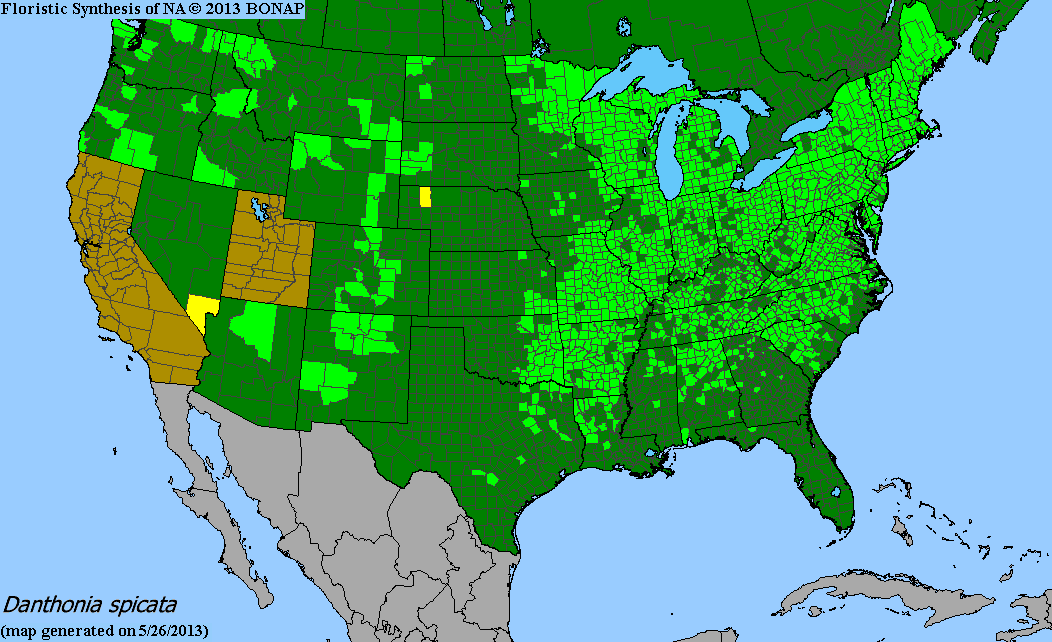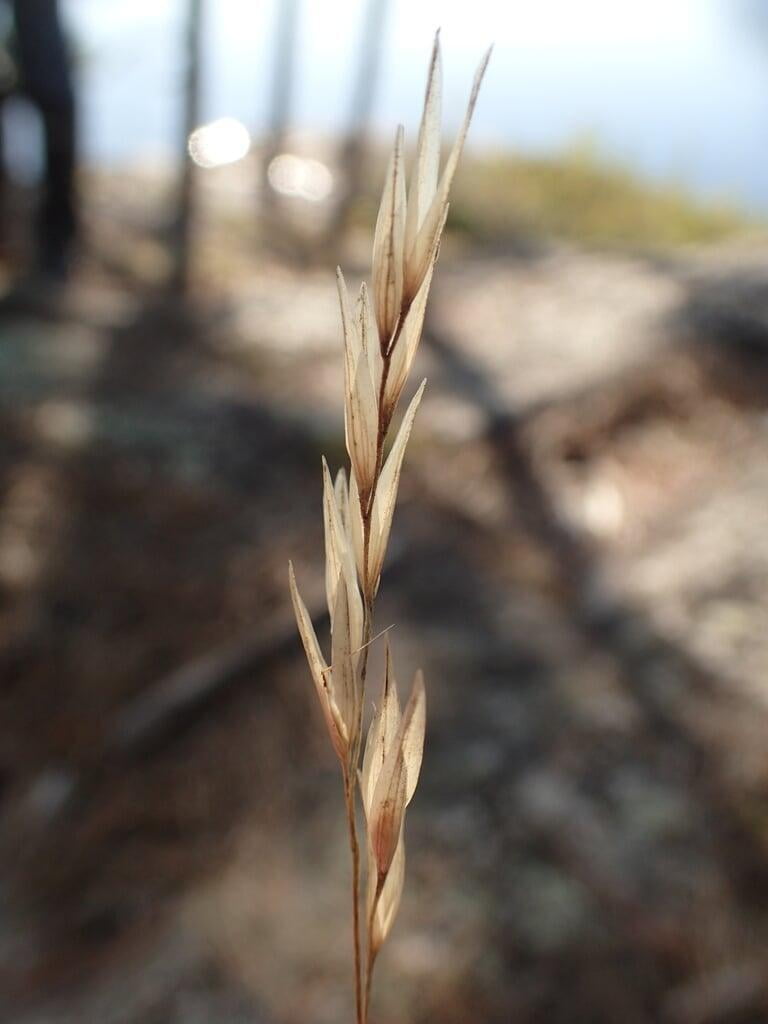Danthonia spicata
Poverty oat grass Description:
Danthonia spicata, commonly known as poverty oatgrass, is a perennial plant that is native to North America. It belongs to the grass family (Poaceae) and typically grows in grasslands, meadows, and prairies.
The plant forms dense clumps of narrow leaves that are green in color and can reach up to 2 feet in height. The stems bear seed heads that are spike-like in appearance, ranging in color from green to purplish-brown.
Poverty oatgrass is an important plant for wildlife, providing habitat and food for a variety of animals, including birds, small mammals, and insects. It is also commonly used in landscaping for its ornamental value, as well as for its ability to control erosion and thrive in dry, sandy soils.
Poverty oatgrass prefers dry soils and can tolerate both sun and shade. It is a drought-tolerant plant that can grow in a variety of soil types, making it a versatile choice for grassland restoration and garden design.
Native Range:
Poverty oat grass is found across most of the continental United States with an exception for California and Utah. In Minnesota, Poverty oat grass is found primarily in the East-central and Northern parts of the state.
Standard Plant Information:
Plant height: 8" - 30" inches
Bloom time: July - August
Preferred habitat: Does well in part shade to sun and moist to dry sandy or rocky soils. Often found in fields, savannas, pine stands, bluffs, and rocky shores.
Sowing:
For most homeowners, the best option is to scatter seed on the ground by hand broadcasting at a minimum of 15-16 pls lbs per acre. For even coverage, we recommend that you broadcast seed in perpendicular rows across the site to ensure even coverage.
Planting:
Simply dig a hole in the soil slightly larger than the plant’s roots. Ensure that the soil line of the plant is maintained during the transfer (i.e. the plant should be at the same level with the ground as it was in the pot). Pack any loose dirt back around the plant and make sure you water it well the same day to ensure it has the best chance of survival.












